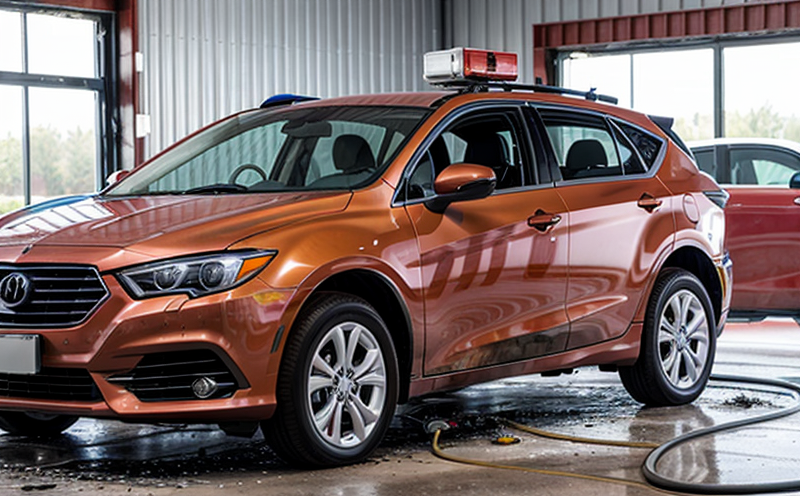FMVSS 302 Flammability of Interior Materials for Passenger Vehicles
The FMVSS 302 regulation is a critical component of safety standards for passenger vehicles in the United States. This standard ensures that interior materials used in automobiles are flame retardant and do not pose a fire hazard, thereby protecting vehicle occupants from potentially life-threatening situations. The testing under this regulation helps manufacturers comply with Federal Motor Vehicle Safety Standards (FMVSS) set by the National Highway Traffic Safety Administration (NHTSA).
The FMVSS 302 test evaluates the flammability of interior materials used in passenger vehicles, including fabrics, foams, and other textiles. This testing is essential for ensuring that materials meet the stringent requirements laid out by regulatory bodies to prevent fire-related accidents and injuries. The test involves subjecting a specimen cut from the material to be tested to a flame source under controlled conditions. Observations are made regarding how the sample reacts to the flame, including its ignition behavior, flaming time, and self-extinguishing characteristics.
The testing process is highly regulated and standardized. The specimen size must conform to specific dimensions as defined by the standard. The specimen is exposed to a gas flame for 12 seconds, after which it is removed from the flame source and observed for continued burning or flaming. Compliance with this test ensures that materials meet stringent safety requirements.
For accurate and reliable testing, laboratories must use precision equipment such as calorimeters, ignition testers, and heat flux detectors to measure the thermal properties of the specimen during the test. The data collected from these instruments is crucial for interpreting the results accurately. Compliance with FMVSS 302 requires not only technical expertise but also strict adherence to regulatory guidelines.
The testing process plays a vital role in ensuring that materials used in vehicles are safe and do not pose fire hazards. By adhering to this standard, manufacturers can demonstrate their commitment to safety and comply with legal requirements. This ensures consumer confidence in the products they purchase and use, contributing significantly to public safety.
Applied Standards
| Standard Name | Year of Publication |
|---|---|
| Federal Motor Vehicle Safety Standard (FMVSS) 302 | 1974 |
| ASTM D635 | 2018 |
The FMVSS 302 regulation is the primary standard that governs the flammability testing of interior materials for passenger vehicles. This regulation ensures that all materials used in vehicles meet specific safety criteria to prevent fire hazards. In addition to the FMVSS, ASTM D635 provides additional guidance and specifications on how to conduct the tests accurately.
The standards outlined in these documents are crucial as they provide clear guidelines for specimen preparation, test conditions, and acceptable results. Compliance with these standards ensures that the testing process is consistent and reliable across different laboratories and regions.
Benefits
- Ensures compliance with FMVSS 302 regulations
- Reduces risk of fire incidents in vehicles
- Enhances consumer trust in vehicle safety
- Promotes safer driving environments by reducing potential hazards
- Supports the development of innovative and safe materials for automotive interiors
- Aids in meeting international safety standards
The benefits of FMVSS 302 testing extend beyond individual vehicles to contribute positively to public safety. By adhering to this standard, manufacturers can improve the overall safety of their products, thereby reducing potential risks associated with fire hazards. This not only enhances consumer trust but also supports the development of safer and more innovative automotive interiors.
Customer Impact and Satisfaction
- Increased confidence in vehicle safety for consumers
- Promotes safer driving environments, reducing potential risks
- Supports compliance with stringent regulatory requirements
- Encourages the use of high-quality materials that meet specific safety criteria
- Sustains consumer satisfaction by ensuring consistent product quality and safety standards
The impact on customers is profound as FMVSS 302 testing ensures that the vehicles they purchase are safe from fire hazards. This contributes to overall customer satisfaction, knowing that their vehicle adheres to rigorous safety standards.





